
In order to understand Achilles tendonitis, we must understand the Achilles tendon. Per WebMD, “the Achilles tendon is a tough band of fibrous tissue that connects the calf muscles to the heel bone (calcaneus)”. The gastrocnemius and soleus muscles (calf muscles) blend together, becomes the Achilles tendon, and inserts into the heel.
This inflammation can be caused by numerous things:
- Activities involving quick acceleration, deceleration, pivot, or putting a quick stretch on the tendon.
- Leg and calf muscles that are too tight.
- Having “flat feet”. When you take a step, the arch of your foot collapses and stretches the muscles and tendons of the foot and lower leg.
- Wearing high heels. Doing this shortens your gastroc/soleus and Achilles tendon and may cause tightness.
- Per WebMD, taking medicines called glucocorticoids or antibiotics called fluoroquinolones.
This inflammation can cause difficulty walking or even difficulty wearing shoes that have contact at the heel or the back of the foot.
Treatments:
- R.I.C.E. (rest – ice – compression – elevate)
- Rest your leg.
- Ice it. Ice your heel/calf for 15-20 minutes every 3 to 4 hours to reduce pain and swelling.
- Compress your leg. Use an elastic bandage around the lower leg and ankle to keep down swelling.
- Elevate your leg
- Take anti-inflammatory painkillers or nonsteroidal anti-inflammatory drugs like ibuprofen and naproxen to help with pain and swelling.
Once diagnosed,
- Use a heel lift or an insert in your shoe while you recover to help protect your Achilles tendon from further stretching.
- Soft tissue mobilization/massage (STM) to add circulation and work the mobility of calf, tendon, and surrounding tissues.
- Gently stretching and mild strengthening exercises to assist with decreasing muscle and tendon tightness and assist with return to normal function.
GASTROC STRETCH:
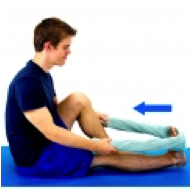
Put towel around the ball of the foot. Gently pull towel to stretch the back of calf. Hold 20-30 seconds and repeat 3 times.
PLANTARFASCIA STRETCH:
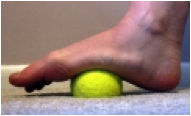
Use tennis or golf ball under the arch of the foot. Roll from the base of toes to the heel. Roll for 2 minutes.
GASTROC STRETCH:
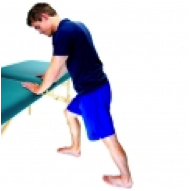
Stand with one leg back with toes forward, heel down, and leg straight. Lean forward until a gentle stretch is felt in the back lower leg (calf). Hold 20-30 seconds and repeat 3 times.
SOLEUS STRETCH:
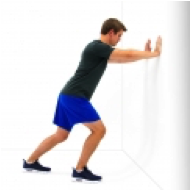
Stand with one leg back with toes forward, heel down, and slightly bent back leg. Lean forward keeping the back leg bent until a gentle stretch is felt in the back lower leg (calf). Hold 20-30 seconds and repeat 3 times.
STRENGTHENING: Strengthening needs to be slow and symptom-free (you don’t want to aggravate the tendon again). Eccentric strength work usually benefits the patient well at this time.
Kinesio Tape to help alleviate symptoms and decrease tension in tendon.
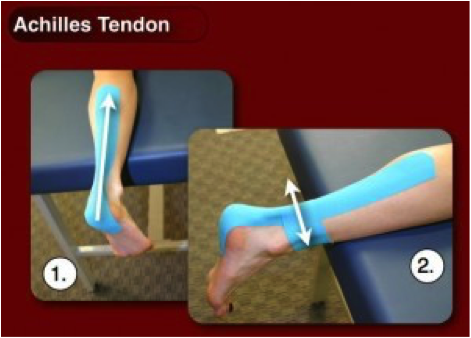
- See figure 1 – Inhibition I-strip to Achilles tendon.
- Sometimes a double strip works better if pain is defuse.
- See figure 2 – Apply a “decompression or Band-Aid” piece of tape using stretch over the area of the most pain if there is a specific painful spot.
Something that can be frustrating for people dealing with Achilles tendonitis is the recovery time. Once the tendon is inflamed and is symptomatic, then decreasing the symptoms and improving the mobility of the Achilles tendon and calf musculature is slow and can easily have flare-ups. Complete recovery can take a long time even up to months. Being patience and staying the course is really what is needed.

